When I opened my accounting firm, I was soon buried in a mess of “mind clutter.” That’s what I call ideas, projects and tasks that have an unknown place in your business.
It was crucial for me to sort things out. And it will be for you as well if you want to be the CEO of your own accounting business, no matter what size.
The following method helped me organize my mind clutter and dedicate my time to the parts of my business I truly love.

Marie Kondo, the Japanese organizing consultant and Netflix sensation, inspired my four-step method. Just as she helps people throw out, give away, and tidily store their belongings, you can do the same with your mind clutter.
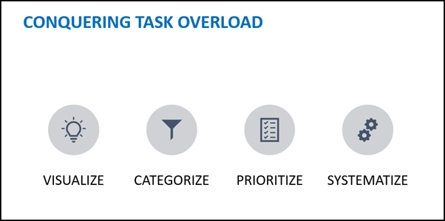
- 1. VISUALIZE

Step 1 is metaphorically “taking everything out of the closet.”
This means purging all your ideas from your mind and getting them onto paper (or a digital document.) Whatever medium you use, the point is to see it all in front of you. Write until there are no more to-dos, daily tasks, or project ideas floating around in your head. Write until your mind is empty.
- Now, you’ll use this list in Step 2 of our method.
- 2. CATEGORIZE

It is now time to take your compilation of mind clutter and decide, in Marie’s words, “what sparks joy.”
When I started my business, I used to say yes to everything.
- Combine five QuickBooks files into one? Sure!
- A non-profit needs a part-time controller? Not my niche, but sign me up!
- Take on a new client who can only pay half what I'm looking to make? Let's do it!
Guess what. None of these things were sparking joy.
I had to go through my list and decide which items really lit me up inside. Now, I only work with Shopify and Amazon clients because that’s where I feel motivated to spend my time.
So, in Step 2, you will go through every item in your list. Some questions to ask yourself may be: Is this item in line with…
- my desired lifestyle?
- my passion?
- the clients I want to work with?
- my desired pricing?
- the services I want to provide?
If you answer “yes,” the idea stays.
If you answer “no,” you delegate, delete, or donate.
Once you’ve gone through each item, you should feel more aligned with your vision.
- 3. PRIORITIZE

You should now have a list of things you’ve decided to keep. It may be a long list. Don’t be overwhelmed.
The important thing to keep in mind is that you have to be realistic. You can’t do everything on your list at once. Some things will, of course, need to wait. Let your brain accept that, and once you do, you will calm down.
In this step, you will focus on your top three priorities from the entire list. Then, you will find the top three tasks you need to do to achieve each priority goal. So in total, that means you’ll have nine tasks to focus on.
For example, my top three priorities may be:
- 1. to create an onboarding workflow
- 2. to hire a new assistant
- 3. to find a project management app
For the first one, onboarding workflow, my top three tasks are:
- 1. to write an engagement letter
- 2. to codify the onboarding steps for myself and my employees
- 3. to pick the best onboarding app
I then list my top three tasks for the remaining two priorities, and now I have the nine tasks in total that I know I need to focus on.
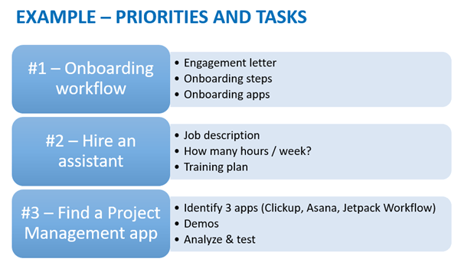
Once you figure out your nine total tasks, you schedule them into your calendar or add them to your to-do list. That way, you know exactly how best to utilize your time.
- 4. SYSTEMATIZE
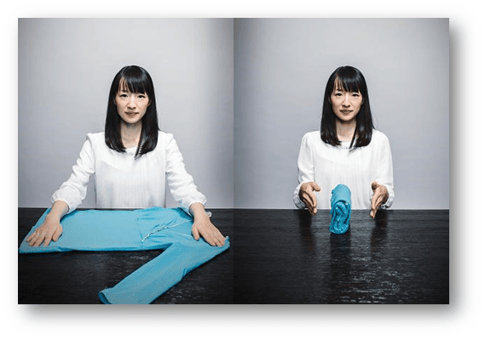
Marie Kondo could hire a hundred assistants to go into homes and use her exact method because she’s systematized it. With every cleanup, she goes through the same steps.
You can always delegate as you go along, but your workload will be more sustainable if you can systematize your processes.
If you let yourself become the center of your business, it will end up taking too much of your time and money. You’ll need to hire expert employees who don’t require training. Then you’ll find yourself adapting to how your clients want things done.
Instead, make your systems and processes the center. Let them guide your team, your work, and your clients to where you want everything to be. You can then focus on improving the systems to make more valuable outcomes that bring in the clients you want.
The way you do this is by creating checklists of steps and tasks. For each process, you make a checklist of each step involved, and every single task that goes into each step.
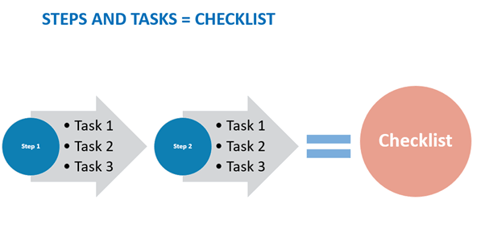
Start by identifying a process you want to systematize. As you’re actually performing the process, break it down into major steps. Then, break down each step into smaller tasks. Every time you repeat the process, have the checklist handy. Compare each repetition, add to the process, and refine it until the process is precisely documented in the checklist.
Here is a sample workflow from my own company’s client onboarding process:
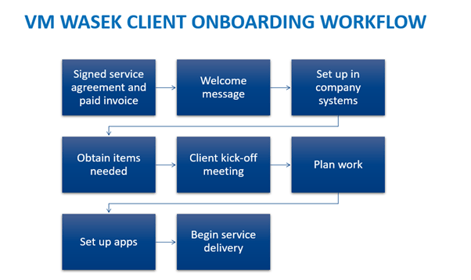
Take systematizing one process at a time. It should take you approximately 18 to 24 months to systematize everything in your business. Don’t worry if you don’t have full checklists for every process after six weeks.
As you make checklists and stick to your vision of what sparks joy for you in your business, you’ll see that your task load is manageable.
Be patient with yourself and diligent in applying this method as many times as necessary. Soon task overload will be a thing of the past.
.png?width=150&height=63&name=TWRlogo-regmark_blueblack%20(1).png)
.png)










Do you have questions about this article? Email us and let us know > info@woodard.com
Comments: